
Local outdoor enthusiasts reveal why pollinators are so important and how you can create your own garden to help them thrive.
By Ashley Ryan
It’s hard to think of a place more beautiful than a vibrant garden on a sunny spring day. Brilliant flowers—both native and non—add a pop of color to the space while verdant greenery serves as a playground for tiny creatures that are almost too small to see. You can hear the faint buzz of the bees and the high-pitched whistle calls of the hummingbirds while patterned butterflies float along, riding the breeze. Everything here is brimming with life, which, in turn, makes visitors feel more alive themselves.
It has already been proven that being in nature helps with mental health and overall well-being, with a study by the American Psychological Association linking the great outdoors to healthy cognitive development, increased happiness, fewer chronic health issues and more. But the importance of pollinators goes beyond the beauty of nature, with more than 75% of staple food crops relying on the process of pollination, according to the U.S. Department of Agriculture.
“[The bees] are responsible for pollinating not only certain food crops, but also for pollinating all the wildflowers and the wild lands, … keeping all the species that are native to California alive,” says Laura Ford, founder of the local Pollinator Protection Fund nonprofit. “And so, we really need pollinators to essentially keep all of our ecosystems thriving … [with] great biodiversity. … They’re absolutely paramount for the future and for our survival on this planet.”
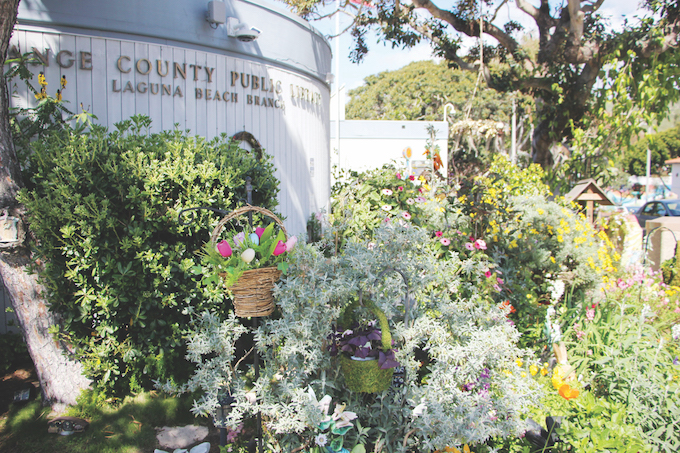
There are many things you can do to help pollinators thrive, from building small “houses” for native bees to connecting with other like-minded individuals as a member of the Laguna Beach Garden Club—especially in light of National Pollinator Week from June 17-23. But possibly most important of all is creating a garden of your own, filled with pollen and nectar that encourages butterflies, bees, hummingbirds and other pollinators to stop and stay a while before moving on to spread their wings.
Crucial Creatures
Many species that often aren’t regarded as pollinators still practice the techniques that keep local plant life blooming. In addition to birds and butterflies, some moths and bats pollinate by moonlight; there are also 1,600 species of native bees in California alone—beyond the frequently recognized, non-native honeybee.
“Honeybees came from Europe in the 1600s and they’re more generalist; they’ll go to anything,” says Jane Leary, president of the Laguna Beach Garden Club. “But the native bees are actually highly specialized, and many of them have evolved to pollinate specific native plants. … They’re important because, without them, there are certain plants—fruits, vegetables, whatever—that would not have a pollinator.”
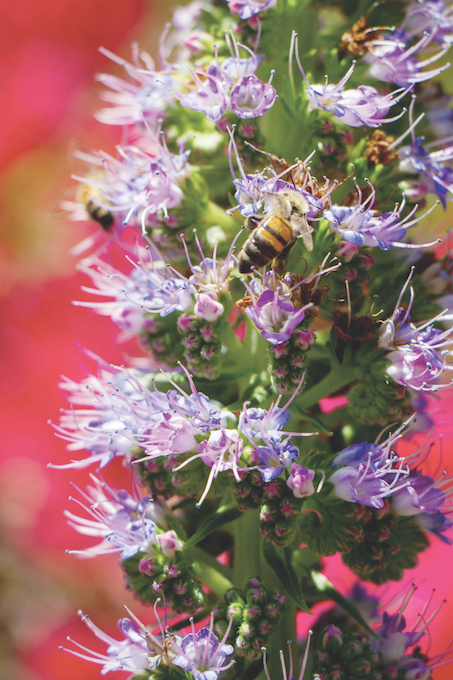
One such species, Crotch’s bumblebee, is near endemic to California alone and helps pollinate milkweed, which is crucial to the survival of the monarch butterflies that Ford’s group aims to protect. However, these bees, just like the monarchs, are also endangered. “They’re really dwindling, and that’s because of pesticides and not having the habitat that they need,” she explains.
Another interesting thing about milkweed, Ford says, is that its sap is poisonous, which is part of the reason that monarch caterpillars have adapted to use it as a food source. “When the caterpillars eat the milkweed, it’s a deterrent to predators because, if they ingest … [the caterpillars], it will make them sick,” Ford notes.
The plants in your garden may serve as food sources, but that isn’t their only purpose. They are often used as nest-building materials or to find mates; in addition, they provide shelter to the pollinators who frequent their leaves and flowers. “We found, [with milkweed,] it really helps to plant native grasses for caterpillars to hide in and for them to get shelter from the elements and from the sunlight,” Ford adds. “The sun can kill them when they’re tiny. And this helps protect them also, from parasitic flies which predate on them.”
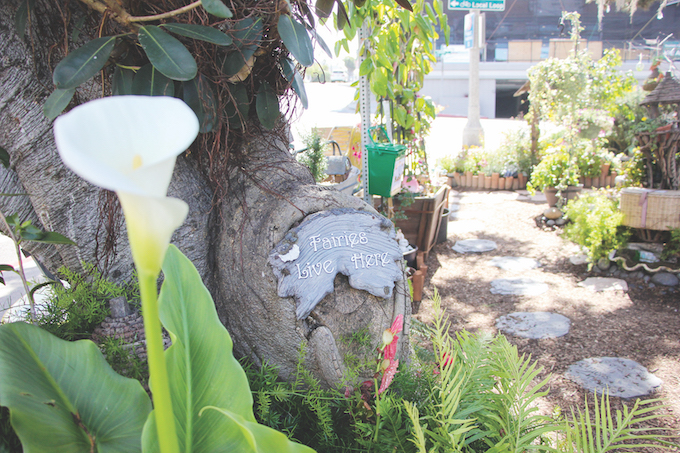
Keeping these creatures safe helps ensure a healthy food chain and better environment all around for humans and wildlife; by protecting local pollinators, we are able to walk a more harmonious path with nature.
Gifts of Gardening
When creating a pollinator garden at home, there are many elements to consider. The most important, of course, is which types of plants to include. You’ll want to think about the different types of pollinators and figure out what their host plants are, so that you can procure vegetation on which they can lay their eggs.
You’ll also want to think about how much light your space has—whether it offers full or partial sun or if it’s shaded—as well as how dry it is, what the irrigation is like and how much wind typically whips through. For larger gardens, Ford also likes to design landscaping that is pleasing to the eye: “different heights and different types of texture and color,” she notes.
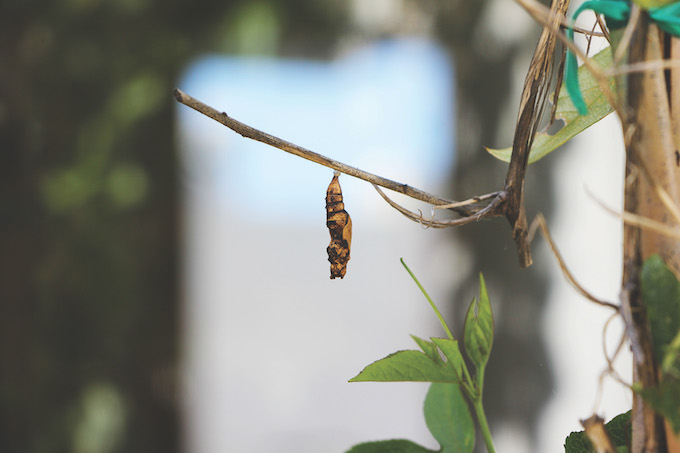
Gardeners, whether just starting out or adjusting a previously planted space, should also seek out a variety of plants that flower in different seasons so that your plot has continuity. As spring plants are dying out, those that peak in summer or fall will just be beginning to bloom, ensuring that there are places available for pollination year-round.
And, of course, native plants are key. “The beauty about California natives is that, once they are established, you really don’t have to water them very much,” Leary says. “They’ve kind of adapted to being here in the Mediterranean climate.”
Ford agrees, noting that healthy soil is another crucial component to planting a garden that aids the pollinators’ plight. “Soil is the foundation of everything. … One of the ways that you can create healthy soil is to plant native plants, because they actually feed the soil and have a symbiotic relationship with it,” she says, “… so everything is working together.”
She adds that you can either design your plot entirely with regionally native species or include a mixture, incorporating things like California buckwheat, seaside daisies or coastal sunflowers as well to appeal to a wider range of generalist pollinators. Ceanothus, or California lilacs, and manzanita are other great options, as they bloom early and can be beneficial to queen bumblebees who are looking for nectar as they emerge after winter. “If they can’t find nectar, they won’t be able to lay eggs and create bumblebee colonies for the future,” Ford notes. “So it all depends on those early queens being successful in finding food.”
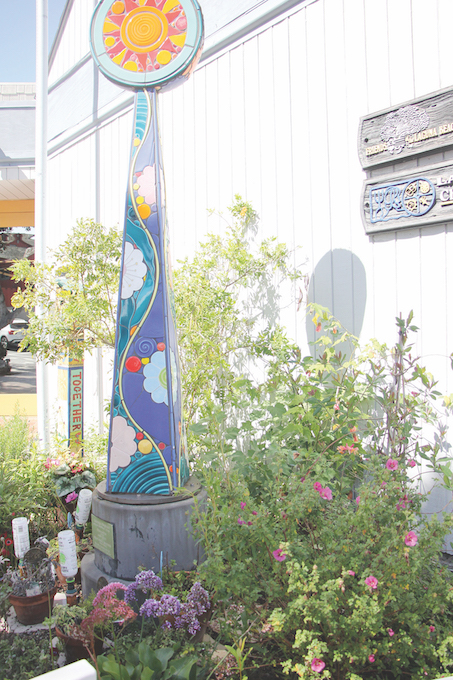
Leary shares that some other types of plants that appeal to pollinators include yarrow, California aster, verbena, desert willow, coyote brush, rabbitbrush, lupin, monkey flower, native California sages and additional kinds of buckwheat. Planting in clusters can also provide bees and butterflies with a target of sorts to seek out.
What should you avoid? Pesticides are a big one, as they contain chemicals that can be harmful to wildlife. But native plants do not attract pests the same way that non-native plants do, Ford says. Although common milkweed is not a native plant, it’s important to the survival of monarch butterflies, so she adds that, in cases such as this, you can plant native species around the non-native ones in order to help eliminate pests. If you must use pesticides, consider spraying them at night when fewer creatures are active.
Small Spaces
Laguna Beach backyards don’t always provide the kind of space you’d want for a large garden, but think small: Pollinator gardens can be set up on patios or in small spaces as well.
Ford started a small garden on the patio of her Dana Point home consisting entirely of potted plants. “It’s worked in its own way,” she says. “We have monarchs making chrysalises on our front porch. We’ve even had a little bird nesting above our front door.”
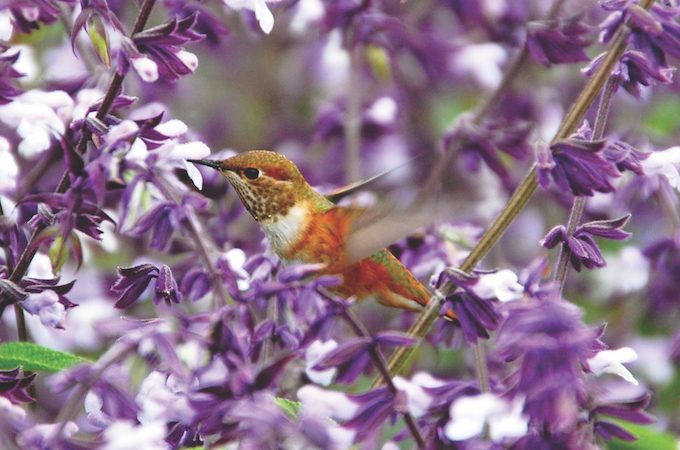
These quaint spaces can include the same kind of planning as larger gardens, with homeowners checking their light and irrigation before deciding on which pollinator-friendly plants to incorporate. While it may seem like these porch gardens wouldn’t offer enough for bees and butterflies to explore, Ford notes that sometimes the quality of what you plant is more important than the quantity. Find plant species that appeal to them and they will come.
“You don’t have to have a ton of space to make it functional,” she explains. “One pot, in fact, will even work to bring in butterflies.” She will also be giving out roughly 10 butterfly boxes—portable wooden crates with handles that feature lilac verbena and narrow leaf milkweed in organic, chemical-free soil—to local groups at community centers, churches or schools to encourage groups to play a part in rebuilding the region’s butterfly population.
Hive Mind
This isn’t the only way that Ford has worked her love of butterflies and bees into the local fabric of the community. Since her Pollinator Protection Fund launched in 2021, she has designed and installed public pollinator gardens in both Heisler and Bluebird parks in Laguna as well as in Newport Beach and Laguna Hills. Additional spaces in Laguna Coast Wilderness Park and at the Sawdust Art Festival grounds have also been turned into bee and butterfly gardens in recent years, while another can be found outside the Laguna Beach Library.
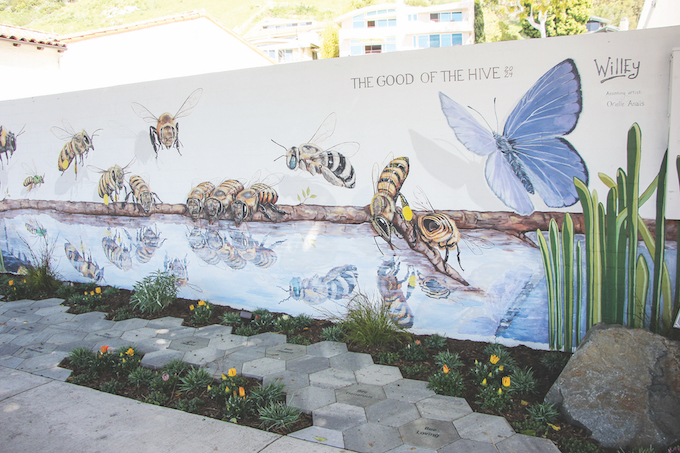
During the pandemic, local residents Simone Adams and Kim Shields, who serve on the Friends of the Laguna Beach Library board, offered to help creator Jessica DeStefano keep up the whimsical fairy garden. Now in charge of the whole operation—including rebuilding the miniature sets and planning activities like scavenger hunts for children to enjoy in the outdoor space—they recently orchestrated the creation of a pollinator garden off to the side of the front entrance. Formerly a succulent patch that was in dire need of attention, it has been transformed with butterflies in mind and features a barrier to keep the pollinators protected. However, you’ll find that chrysalises pop up all over both of these spaces, near salvia and milkweed plants, and provide inspiration for visitors looking to plant their own plot at home.
“Fairy gardens have taken off—not just because of us, but [people who visit the garden] do get inspired,” Shields says. “… This needs to take off, too.”
Adams and Shields also organize a number of events throughout the year, including the kick-off to the summer pollinator series, a bird-themed monthly service project in May. Throughout June, the fairy garden will highlight the importance of bees while July is reserved for education on the life cycle of a butterfly, which families can witness firsthand in the garden; the Butterfly and Fairy Festival will also be held July 27.
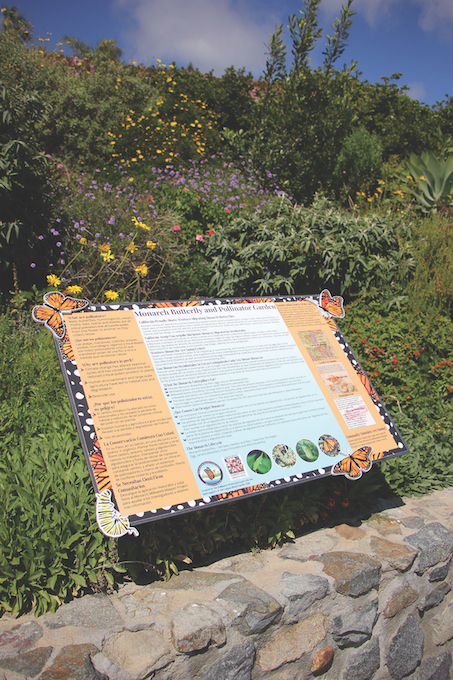
Elsewhere, after hosting artist Matt Willey as part of its speaker series in 2022, the Laguna Beach Garden Club commissioned him to paint a mural in town as part of his global art project, The Good of the Hive. Completed earlier this year on the side of the Laguna Beach County Water District building downtown, and decorated with real plants and paver stones, the piece features various species, including Crotch’s bumblebee and the Palos Verdes blue butterfly, as part of Willey’s mission to paint 50,000 pollinators—the number of bees in a thriving hive.
“The mission is to get people curious and excited about the planet we live on through the lens of bees and storytelling,” Willey explains. “… The vision is really what a hive represents to me, which is seeing and experiencing the connectedness of everything. Bees in a hive—they are both an individual and the cell of a bigger organism. So are we, and we do not act like it.”
Leary is proud that the club was able to bring Willey’s message to Laguna, especially with extinction on the periphery for many of the region’s pollinators. “The mural is really our love letter to Laguna to express … how important it is that we all work together,” she reveals. “… Whatever we do affects the whole community. If we’re nice and friendly to each other when we walk by, if you say hello to a stranger, if you see someone struggling or there’s a tourist here who’s not quite sure where to go, offer that up. It just changes how people feel in their day-to-day life.”
